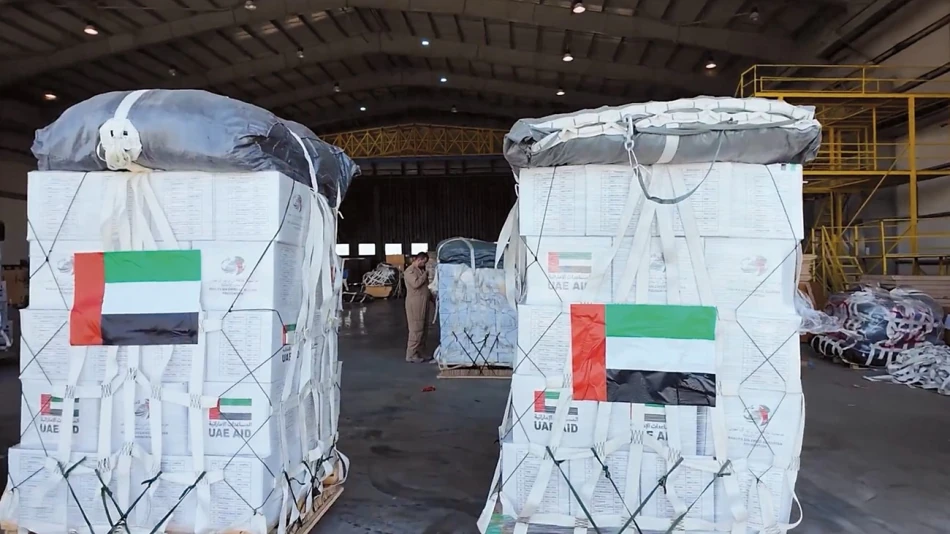
UAE Airdrops Aid for 77th Time in Gaza, Providing Critical Relief
UAE Delivers 77th Gaza Aid Drop as International Coalition Expands Humanitarian Response
The United Arab Emirates has completed its 77th airdrop of humanitarian supplies to Gaza, marking a significant milestone in what has become one of the most sustained international relief operations in the region. The mission, conducted through the "Birds of Goodness" initiative under "Operation Gallant Knight 3," now involves six nations and has delivered over 4,028 tons of aid, demonstrating how middle powers are increasingly filling gaps in global humanitarian response.
Growing International Coalition Takes Shape
The latest airdrop involved coordination between the UAE, Jordan, Germany, France, the Netherlands, Singapore, and Indonesia—a diverse coalition that spans continents and political systems. This multinational approach reflects a pragmatic shift in humanitarian aid delivery, where operational efficiency often trumps traditional diplomatic alignments.
The participation of Singapore and Indonesia alongside European nations signals how the Gaza crisis has mobilized countries beyond the traditional Middle Eastern sphere of influence. Singapore's involvement is particularly notable given its typically cautious approach to Middle Eastern conflicts, while Indonesia's participation aligns with its historic support for Palestinian causes.
Scale and Logistics of Modern Aid Operations
The 4,028 tons of aid delivered through airdrops represents a substantial logistical achievement, though it highlights the limitations of aerial delivery methods. Each airdrop typically carries between 20-50 tons of supplies, meaning the UAE-led operation has maintained an average of one mission every few days since inception.
Operational Challenges and Innovation
Airdrop operations in dense urban environments like Gaza present unique challenges. Unlike traditional refugee camp settings, Gaza's 2.3 million residents are spread across a relatively small area with significant infrastructure damage. The UAE's sustained operation suggests the development of refined targeting and distribution mechanisms that could serve as a model for future urban humanitarian crises.
Regional Humanitarian Leadership Strategy
The UAE's approach reflects a broader strategy of humanitarian diplomacy that has characterized its foreign policy over the past decade. Similar to its response during the Syrian refugee crisis and COVID-19 pandemic, the Emirates positions itself as a reliable partner for international relief efforts, building soft power through operational capability rather than just financial contributions.
This contrasts with traditional aid approaches that rely heavily on UN agencies or bilateral government transfers. The UAE model emphasizes speed, private sector involvement through local charitable organizations, and multilateral coordination outside existing institutional frameworks.
Implications for Future Crisis Response
The success of this coalition model could influence how international communities respond to future humanitarian emergencies. The ability to rapidly assemble operational partnerships across different regions and political systems demonstrates an alternative to often slow-moving traditional diplomatic processes.
For policymakers, the operation shows how middle powers can lead meaningful international responses when major powers are constrained by political considerations. For humanitarian organizations, it demonstrates the potential for hybrid public-private models that leverage both government logistics capabilities and civil society resources.
The sustained nature of this operation—77 missions over several months—also indicates that participating nations have developed systems for long-term commitment rather than symbolic one-off gestures, potentially setting new standards for international humanitarian engagement in protracted crises.
 Sara Khaled
Sara Khaled







